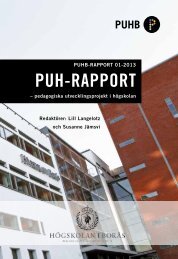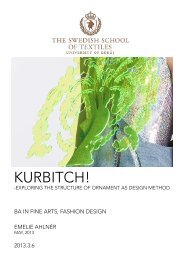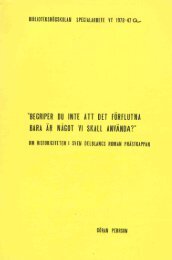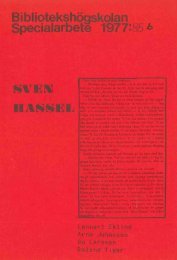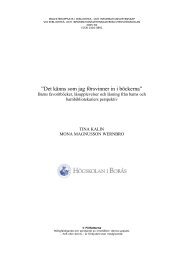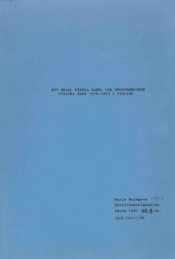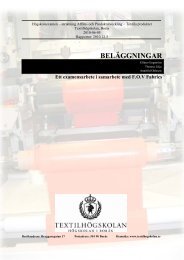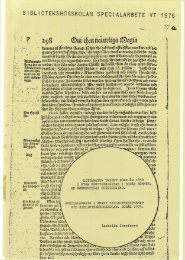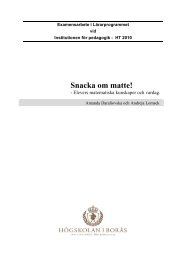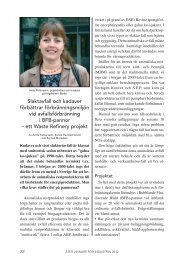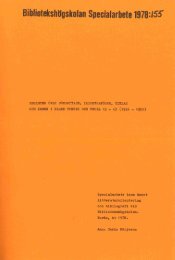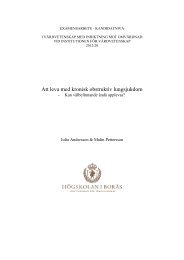barbara jansen - BADA
barbara jansen - BADA
barbara jansen - BADA
You also want an ePaper? Increase the reach of your titles
YUMPU automatically turns print PDFs into web optimized ePapers that Google loves.
colour flow_part 2<br />
Colour flow_part 2 is a first sketch, a first attempt at creating a composition<br />
consisting of three parts. The three parts are variations based on the three<br />
different colour orders and the four scenes (time-lines) created in colour<br />
flow_part 1.<br />
In the following, descriptions of the experiments, the metaphor of instrument<br />
and composition will be used. Each textile structure (in this case a<br />
woven structure) is understood as an instrument on which various compositions,<br />
i.e. light sequences, can be played. A composition can consist of one or<br />
several voices, one or several sections activated independently in the textile<br />
structure. Thus, each voice can play its own melody or play in unison with<br />
other voices.<br />
Part one: scene one is a repetition of colour order 2 playing the rhythmic<br />
structure of scene three, creating fluid, fine-graded changes of colour.<br />
All three sections of the textiles are lit up simultaneously, using three LEDs<br />
on the same side of the textile. As all three sections are playing in parallel,<br />
displaying identical colour orders, they appear to be a single, monochrome<br />
lighting surface (see e.g. next page, scene 1: step 3. LED four, placed on the<br />
opposite side of the middle section of the structure, is not in use and remains<br />
dark/silent = black line).<br />
Part two: scene two uses a selection of colours based on those used in<br />
colour flow_ part 1 accompanied by further randomly selected, contrasting<br />
colours such as red, yellow, blue, green, etc. The smooth colour flow is now<br />
broken up through contrasting “events”. The three sections of the structure<br />
only occasionally light up in unison, as each of the sections or voices now<br />
plays individually as well. Contrast and the feeling of movement are created<br />
by movement up and down the structure (see e.g. next page, scene 3: step<br />
11). As soon as the fourth voice is activated, voices two and four both play<br />
their sequences on the middle section. This facilitates a multi-coloured effect<br />
in this section and also opens up opportunities for further directions of movement,<br />
e.g. from left to right and vice versa (see e.g. next page, scene 2: step<br />
9). Whilst when only one side of the structure displays the colours, there is<br />
always a monochrome colour effect at one “frozen” moment in time.<br />
Part three: scene three further elaborates on the variations in scene two,<br />
whereas voice four remains silent for the most part. Graphical representations<br />
of all three parts can be seen both in Poster 1 and on the next page and<br />
further visualizations of steps 3, 11 and 9 are found on page 44.<br />
41



